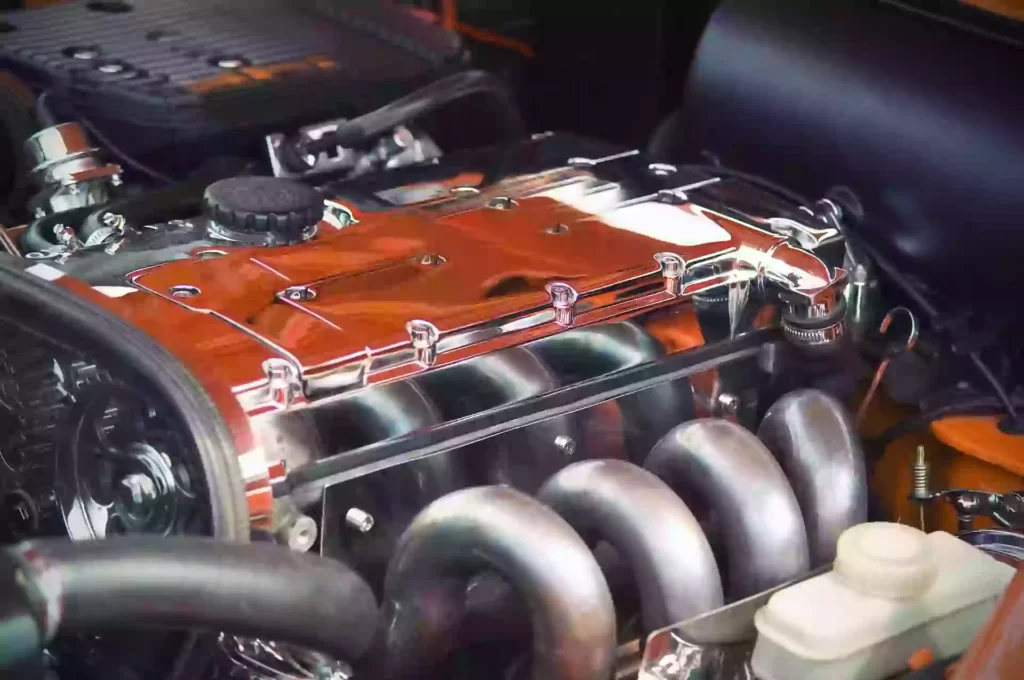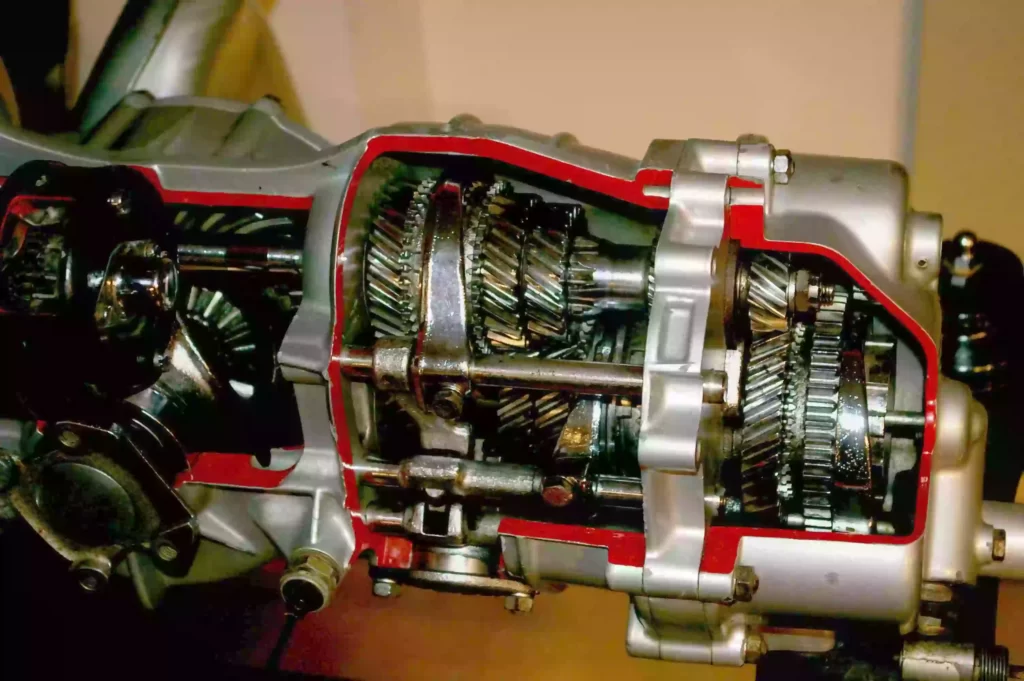The main difference between engine and transmission is that the engine is used to convert the chemical energy into mechanical energy in the form of crankshaft rotation while the transmission is used to convert engine output in different combinations of speed and torque necessary for the vehicle.
Before discussing the difference between engine and transmission let’s know about the role of each of them in automobiles.
What is the role of the engine?

The engine helps to convert the chemical energy of fuels into heat and pressure energy which is further converted into the mechanical energy of the crankshaft.
The device basically consists of the following components: piston, cylinder, valves, connecting rod, crank and crankshaft, spark plug, etc.
The air-fuel mixture in a cylinder is combusted to convert the chemical energy of fuel into the high pressure and temperature combustion products. This Pressure energy is utilized to reciprocate the piston inside of a cylinder. This reciprocating motion of the piston is further converted into the rotational motion of the crankshaft.
What is the role of transmission?

The engine provides lower torque at lower RPM and higher torque at higher RPM. But the vehicle requirement for torque and speed varies as per the driving conditions.
When we are moving on the straight road the vehicle requires higher speed and lesser torque and while climbing onto the hill the vehicle requires higher torque at a lesser speed, Therefore, the engine itself is not able to fulfill the different torque and speed requirements.
Therefore the transmission is used after the engine crankshaft that helps to convert single speed and torque into the multiple combinations/stages of torque and speed.
The transmission consists of a number of gears and a shifting mechanism to provide different gear ratios while the shifting of gear can be operated manually or automatically.
Another mode of transmission known as continuously variable transmission uses belt and CVT pulleys instead of gears for giving the infinite number of speed ratios.
Difference between engine and transmission
| Sr. No. | Engine | Transmission |
|---|---|---|
| 1 | The engine is the device that converts the chemical energy of fuel into mechanical work. | The transmission converts single speed and torque output from the engine in various speed steps. |
| 2 | It deals with the combustion process therefore the temperature is comparatively higher. | The operating temperature is lower than the engine. |
| 3 | It is connected to the transmission through the clutch. | It is connected between the engine and propeller shaft. |
| 4 | It comprises of reciprocating and rotary motion. | It only consists of rotary motion. |
| 5 | The engine works at higher pressure. | The operating pressure is comparatively lower. |
| 6 | The basic components of the engine are piston, cylinder, connecting rod, crank, etc. | The basic components of the transmission are gear, shifting arrangement, etc. |
| 7 | The output of the engine is controlled by adjusting the rate of air and fuel intake. | The output of the gearbox is controlled by the gear shifting levers. |
| 8 | It is not possible to move a vehicle without an engine. | The vehicle can move without transmission with no speed and torque variation. |
Read also: